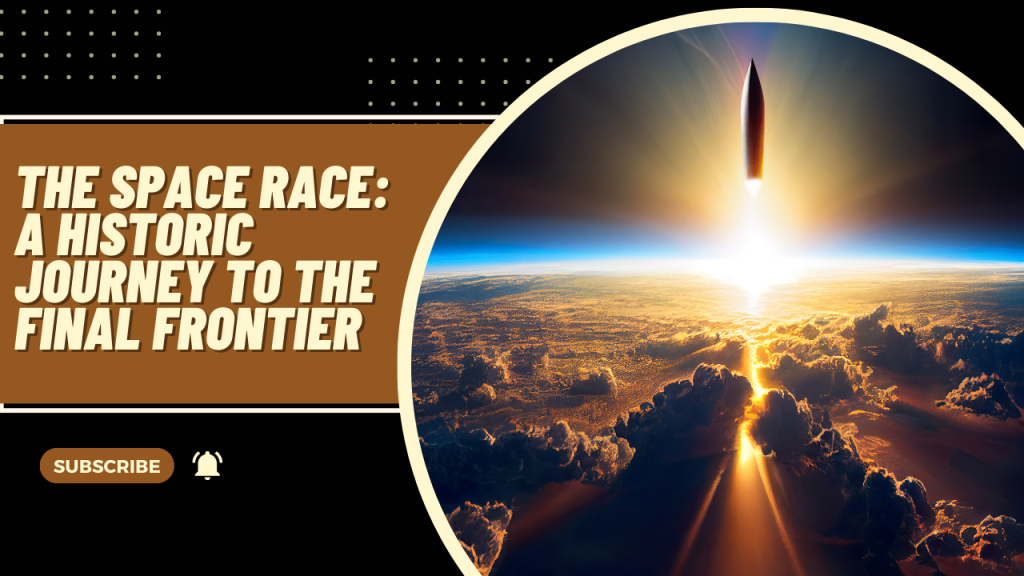
The Space Race, a defining era in human history, unfolded during the mid-20th century as the United States and the Soviet Union competed fiercely to conquer the cosmos. This captivating period marked the dawn of space exploration, with both nations striving for supremacy in scientific achievements, technological prowess, and, ultimately, geopolitical influence. The Space Race not only revolutionized our understanding of the universe but also laid the groundwork for future space endeavors.
Prelude to the Race
Cold War Tensions
The origins of the Space Race can be traced back to the geopolitical tensions of the Cold War. The United States and the Soviet Union, ideological adversaries during this era, sought to showcase their scientific and technological prowess as a means of asserting global dominance. The launch of the first artificial satellite would become the symbolic battleground for this struggle.
The Launch of Sputnik 1
On October 4, 1957, the Soviet Union achieved a monumental milestone by launching Sputnik 1, the world’s first artificial satellite, into orbit. This event sent shockwaves through the international community and triggered an urgent response from the United States. The race to explore space had officially begun.
The American Response
Project Mercury: The First Human Spaceflight
In response to the Soviet Union’s early lead, the United States established NASA (National Aeronautics and Space Administration) in 1958. Project Mercury, NASA’s first human spaceflight program, aimed to put an American astronaut into orbit. On May 5, 1961, Alan Shepard became the first American to travel to space aboard the Freedom 7 spacecraft.
The Moon Landing: Apollo 11
Arguably the most iconic moment in the Space Race came on July 20, 1969, when NASA’s Apollo 11 mission successfully landed astronauts Neil Armstrong and Buzz Aldrin on the Moon. Armstrong’s famous words, “That’s one small step for [a] man, one giant leap for mankind,” echoed around the world, signifying the United States’ triumph in the race to the Moon.
Soviet Contributions
Yuri Gagarin: The First Human in Space
While the United States celebrated the Moon landing, the Soviet Union had achieved an earlier milestone. On April 12, 1961, Soviet cosmonaut Yuri Gagarin became the first human to orbit the Earth aboard the Vostok 1 spacecraft. Gagarin’s historic flight showcased Soviet space capabilities and emphasized the global nature of the Space Race.
Space Stations and Robotic Missions
The Soviet Union continued to make significant strides in space exploration, launching the first space station, Salyut 1, in 1971. Additionally, their robotic missions, including the Luna and Venera programs, provided invaluable data about the Moon and Venus, contributing to humanity’s expanding knowledge of the cosmos.
Legacy of the Space Race
Technological Advancements
The Space Race spurred rapid advancements in technology, leading to the development of innovations with far-reaching impacts. Technologies born out of space exploration, such as satellite communication, GPS, and medical advancements, have become integral parts of everyday life.
International Collaboration
While the Space Race began as a competition, it laid the groundwork for international collaboration in space exploration. Today, countries around the world contribute to various space missions, working together on projects like the International Space Station (ISS) to further scientific discovery.
The Space Race, a pivotal chapter in human history, transcended national borders and propelled humanity to the forefront of space exploration. The achievements and advancements made during this era have left an indelible mark on science, technology, and international collaboration. As we reflect on the historic journey to the final frontier, the Space Race stands as a testament to the human spirit of exploration and the boundless possibilities that lie beyond our planet.